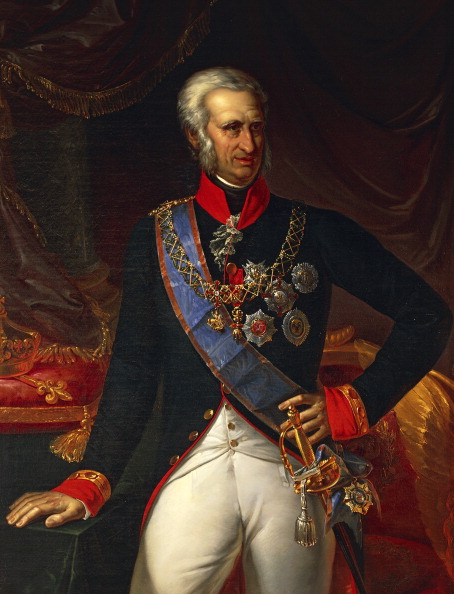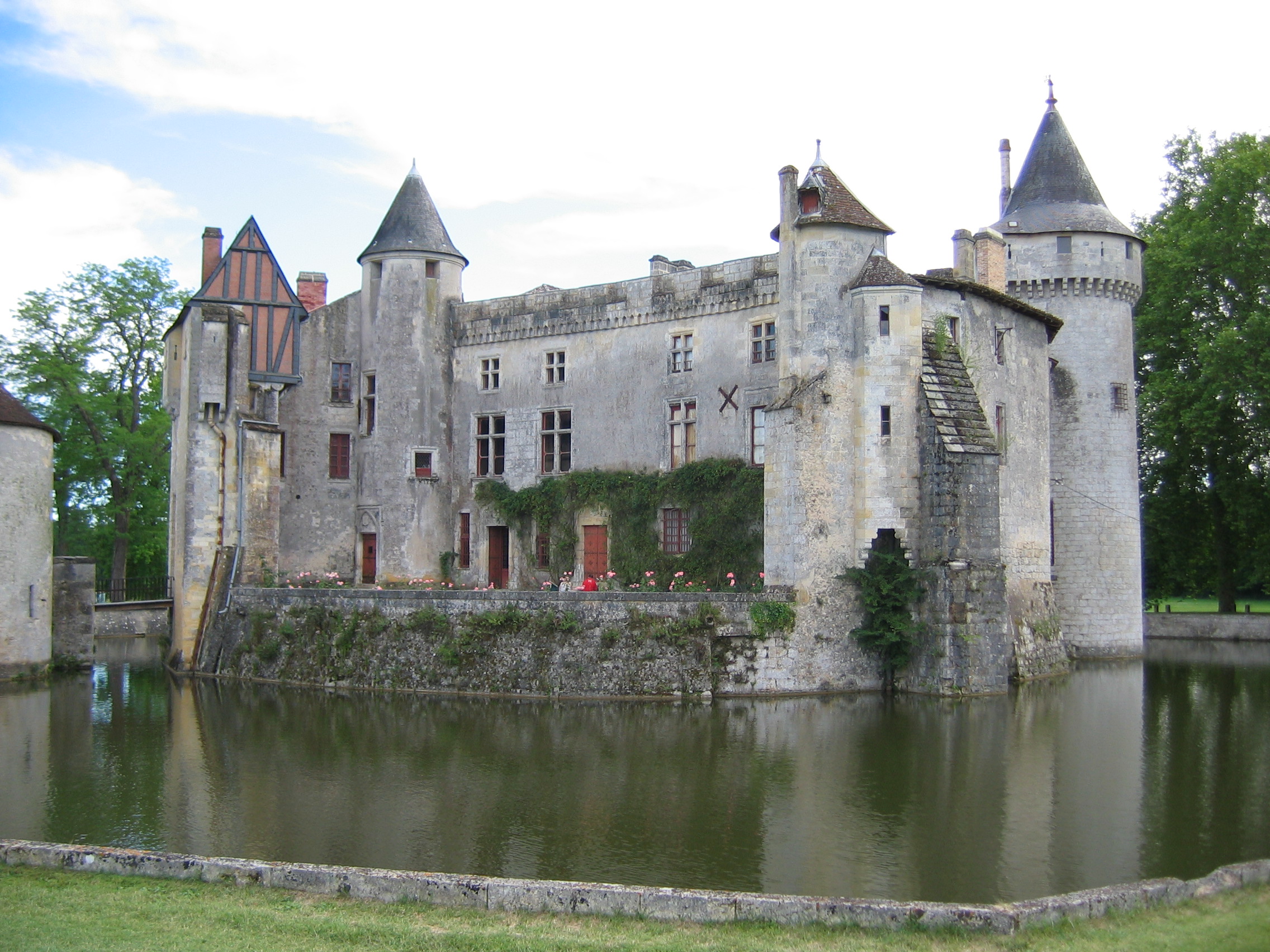|
Antonio Capece Minutolo
Antonio Capece Minutolo, Prince of Canosa (5 March 17684 March 1838), was an Italian nobleman, writer, diplomat and statesman, who served as Minister of Police of the Kingdom of the Two Sicilies. Biography Early life Antonio Capece Minutolo was born in Naples on 5 March 1768. He belonged to an ancient noble family that had served the kings of Naples since the 13th century. His mother, Rosalia, was the daughter of Raimondo di Sangro, Prince of Sansevero. He studied natural philosophy and the liberal arts at the Nazarene College in Rome. Back in Naples, he frequented literary circles and devoted himself to classical studies. Deeply religious, in 1795 Canosa published a treatise on the dogma of Trinity, in which he confuted deism, arguing that any attempt to rationalize religion ends up destroying its very essence. Neapolitan Revolution Unlike many other young nobles of his time, he remained tenaciously attached to the ancien régime and defended it fervently. After the outb ... [...More Info...] [...Related Items...] OR: [Wikipedia] [Google] [Baidu] |
Kingdom Of The Two Sicilies
The Kingdom of the Two Sicilies () was a kingdom in Southern Italy from 1816 to 1861 under the control of the House of Bourbon-Two Sicilies, a cadet branch of the House of Bourbon, Bourbons. The kingdom was the largest sovereign state by population and land area in Italy before the Italian unification, comprising Sicily and most of the area of today's ''Mezzogiorno'' (southern Italy) and covering all of the Italian peninsula south of the Papal States. The kingdom was formed when the Kingdom of Sicily merged with the Kingdom of Naples, which was officially also known as the Kingdom of Sicily. Since both kingdoms were named Sicily, they were collectively known as the "Two Sicilies" (''Utraque Sicilia'', literally "both Sicilies"), and the unified kingdom adopted this name. The king of the Two Sicilies was Expedition of the Thousand, overthrown by Giuseppe Garibaldi in 1860, after which the people voted in a plebiscite to join the Kingdom of Sardinia (1720–1861), Kingdom of Sardi ... [...More Info...] [...Related Items...] OR: [Wikipedia] [Google] [Baidu] |
Maria Carolina Of Austria
Maria Carolina of Austria (Maria Carolina Louise Josepha Johanna Antonia; 13 August 1752 – 8 September 1814) was Queen of Naples and Sicily as the wife of King Ferdinand IV and III, who later became King of the Two Sicilies. As ''de facto'' ruler of her husband's kingdoms, Maria Carolina oversaw the promulgation of many reforms, including the revocation of the ban on Freemasonry, the enlargement of the navy under her favorite, Sir John Acton, and the expulsion of Spanish influence. She was a proponent of enlightened absolutism until the advent of the French Revolution, when, in order to prevent its ideas gaining currency, she made Naples a police state. Born an archduchess of Austria, the thirteenth child of Empress Maria Theresa and Holy Roman Emperor Francis I, Maria Carolina married Ferdinand as part of an Austrian alliance with Spain, of which Ferdinand's father was king. Following the birth of a male heir in 1775, Maria Carolina was admitted to the Privy Counc ... [...More Info...] [...Related Items...] OR: [Wikipedia] [Google] [Baidu] |
Treaty Of Florence
The Treaty of Florence (28 March 1801), which followed the Armistice of Foligno (9 February 1801), brought to an end the war between the French Republic and the Kingdom of Naples, one of the Wars of the French Revolution. Forced by the French military presence, Naples ceded some territories in the Tyrrhenian Sea and accepted French garrisons to their ports on the Adriatic Sea. All Neapolitan harbours were closed to British and Ottoman vessels. Napoleon was relatively lenient to the defenseless Kingdom of Naples thanks to his need to appease Tsar Paul I of Russia and its allies of the Second League of Armed Neutrality. The Tsar, who was assassinated less than a week before the signing of the treaty, was concerned with the French advance in Italy and had decided to support the King of Naples. The First Consul, wanting to attract the Tsar to his side in the strife in Europe, was forced to allow Ferdinand IV to remain on the throne albeit now as an ally of France. Context In t ... [...More Info...] [...Related Items...] OR: [Wikipedia] [Google] [Baidu] |
Aristocracy (class)
The aristocracy (''from Greek'' ''ἀριστοκρατία'' ''aristokratía'', "rule of the best"; ''Latin: aristocratia'') is historically associated with a "hereditary" or a "ruling" social class. In many states, the aristocracy included the upper class with hereditary rank and titles. They are usually below only the monarch of a country or nation in its social hierarchy. History In some, such as ancient Greece, ancient Rome, or India, aristocratic status came from belonging to a military class. It has also been common, notably in African and Oriental societies, for aristocrats to belong to priestly dynasties. Aristocratic status can involve feudal or legal privileges. Plato’s '' Symposium'' offers a glimpse into the intellectual and cultural life of aristocracy in ancient Athens. The dialogue takes place at a banquet attended by prominent Athenian aristocrats, illustrating how the elite not only wielded political and military power but also shaped philosophic ... [...More Info...] [...Related Items...] OR: [Wikipedia] [Google] [Baidu] |
Sanfedismo
''Sanfedismo'' (from ''Santa Fede'', "Holy Faith" in Italian) was a popular anti-Jacobin movement, organized by Fabrizio Cardinal Ruffo, which mobilized peasants of the Kingdom of Naples against the pro-French Parthenopaean Republic in 1799, its aims culminating in the restoration of the Monarchy under Ferdinand I of the Two Sicilies. Its full name was the Army of Holy Faith in our Lord Jesus Christ (Italian: ''Armata della Santa Fede in nostro Signore Gesù Cristo''), and its members were called Sanfedisti. The terms ''Santafede'', ''Sanfedismo'' and ''Sanfedisti'' (sometimes rendered in English as 'Sanfedism' and 'Sanfedist') are sometimes used more generally to refer to any religiously motivated, improvised peasant army that sprung up on the Italian peninsula to resist the newly created French client republics. Campaign Cardinal Ruffo recruited the Sanfedisti in his native Calabria. His recruiting poster of February 1799 reads: :"Brave and courageous Calabrians, unite ... [...More Info...] [...Related Items...] OR: [Wikipedia] [Google] [Baidu] |
Castel Sant'Elmo
Castel Sant'Elmo is a medieval fortress located on Vomero Hill adjacent to the Certosa di San Martino, overlooking Naples, Italy. The name "Sant'Elmo" derives from a former 10th-century church dedicated to Sant'Erasmo, shortened to "Ermo" and, finally altered to "Elmo". Located near the upper terminus of the Petraio, one of the city's earliest pedestrian connections between upper and lower Naples, the fortress now serves as a museum, exhibition hall, and offices. History Documents date a structure at the site from 1275, from the era of Charles of Anjou. Known originally as ''Belforte'', it was likely a fortified residence, surrounded by walls, its entrance gate marked by two turrets. In 1329, using designs by the Sienese architect Tino da Camaino, king Robert of Naples enlarged the fortress described in documents as ''palatium in summitatae montanae Sancti Erasmi''. Camaino also supervised construction of the adjacent Carthusian monastery of San Martino. By 1336, the palace ... [...More Info...] [...Related Items...] OR: [Wikipedia] [Google] [Baidu] |
Veduta Di Santa Lucia (Largo Di Palazzo) E San Martino, Napoli,1799
A ''veduta'' (; : ''vedute'') is a highly detailed, usually large-scale painting or, more often, print of a cityscape or some other vista. The painters of ''vedute'' are referred to as ''vedutisti''. Origins This genre of landscape originated in Flanders, where artists such as Paul Bril painted ''vedute'' as early as the 16th century. In the 17th century, Dutch painters made a specialty of detailed and accurate recognizable city and landscapes that appealed to the sense of local pride of the wealthy Dutch middle class. An archetypal example is Johannes Vermeer's ''View of Delft''. The Ghent architect, draughtsman and engraver Lieven Cruyl (1640–1720) contributed to the development of the ''vedute'' during his residence in Rome in the late 17th century. Cruyl's drawings reproduce the topographical aspects of the urban landscape. 18th century As the itinerary of the Grand Tour became somewhat standardized, ''vedute'' of familiar scenes like the Roman Forum or the Grand Cana ... [...More Info...] [...Related Items...] OR: [Wikipedia] [Google] [Baidu] |
Estates Of The Realm
The estates of the realm, or three estates, were the broad orders of social hierarchy used in Christendom (Christian Europe) from the Middle Ages to early modern Europe. Different systems for dividing society members into estates developed and evolved over time. *The best known system is the French '' Ancien Régime'' (Old Regime), a three-estate system which was made up of a First Estate of clergy, a Second Estate of titled nobles, and a Third Estate of all other subjects (both peasants and bourgeoisie). * In some regions, notably Sweden and Russia, burghers (the urban merchant class) and rural commoners were split into separate estates, creating a four-estate system with rural commoners ranking the lowest as the Fourth Estate. * In Norway, the taxpaying classes were considered as one, and with a very small aristocracy; this class/estate was as powerful as the monarchy itself. In Denmark, however, only owners of large tracts of land had any influence. Furthermore, the ... [...More Info...] [...Related Items...] OR: [Wikipedia] [Google] [Baidu] |
Despotism
In political science, despotism () is a government, form of government in which a single entity rules with absolute Power (social and political), power. Normally, that entity is an individual, the despot (as in an autocracy), but societies which limit respect and power to specific groups have also been called despotic. Colloquially, the word ''despot'' applies pejoratively to those who use their power and authority to oppress their populace or subordinates. More specifically, the term often applies to a head of state or Head of government, government. In this sense, it is similar to the pejorative connotations that are associated with the terms ''tyrant'' and ''dictator''. Despot (court title), ''Despot'' has also been a Imperial, royal and noble ranks, royal title assumed by various leaders historically. Etymology The root ''despot'' comes from the Greek language, Greek word ''despotes'', which means "one with power." In ancient Greek usage, a ''despótès'' was technicall ... [...More Info...] [...Related Items...] OR: [Wikipedia] [Google] [Baidu] |
Montesquieu
Charles Louis de Secondat, baron de La Brède et de Montesquieu (18 January 168910 February 1755), generally referred to as simply Montesquieu, was a French judge, man of letters, historian, and political philosopher. He is the principal source of the theory of separation of powers, which is implemented in many constitutions throughout the world. He is also known for doing more than any other author to secure the place of the word ''despotism'' in the political lexicon.. His anonymously published '' The Spirit of Law'' (1748), which was received well in both Great Britain and the American colonies, influenced the Founding Fathers of the United States in drafting the U.S. Constitution. Biography Montesquieu was born at the Château de la Brède in southwest France, south of Bordeaux. His father, Jacques de Secondat (1654–1713), was a soldier with a long noble ancestry, including descent from Richard de la Pole, Yorkist claimant to the English crown. His mother, Mari ... [...More Info...] [...Related Items...] OR: [Wikipedia] [Google] [Baidu] |









